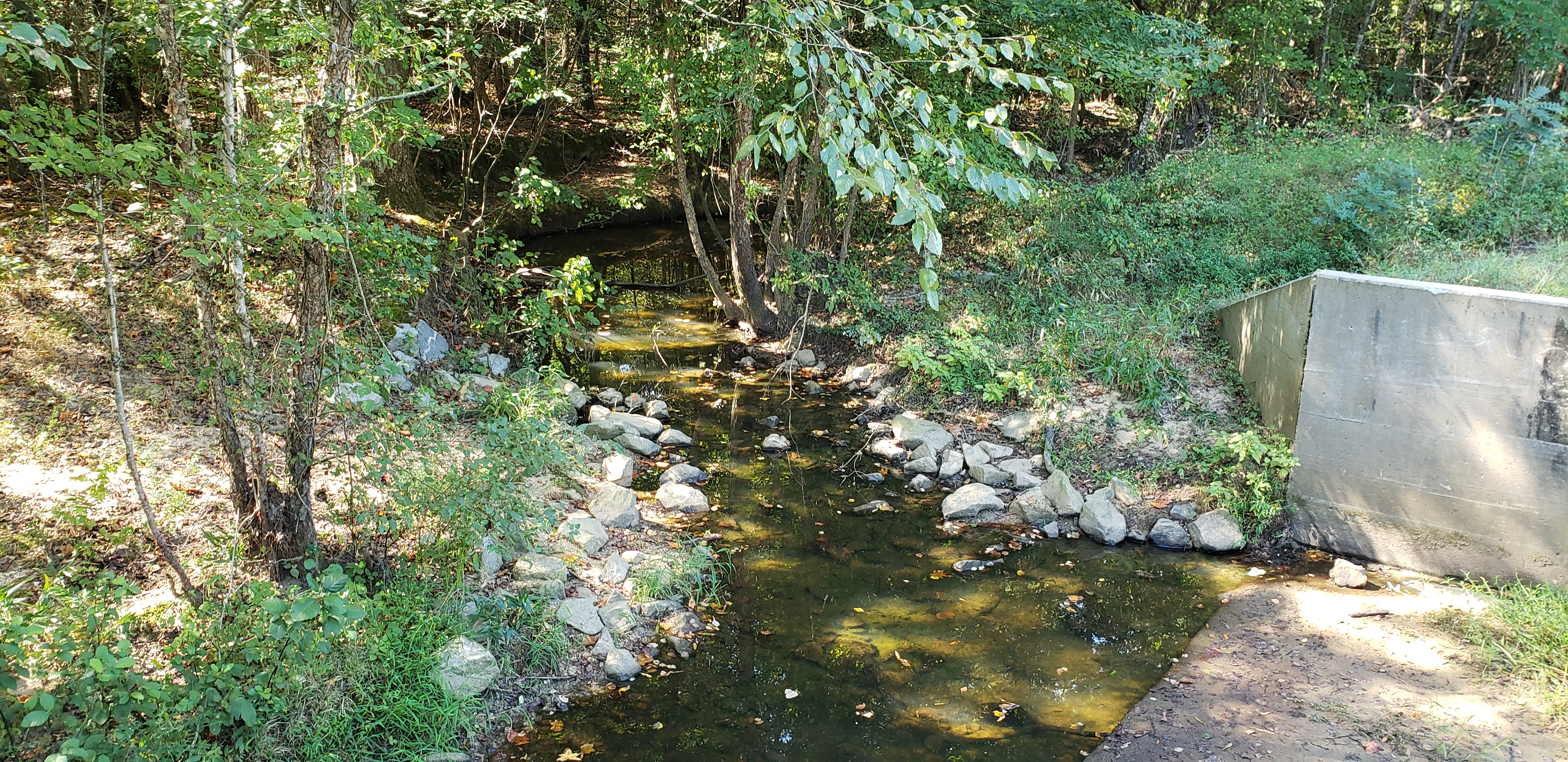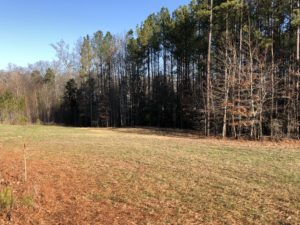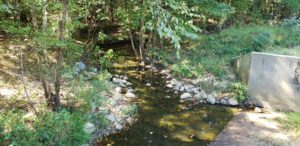
24 Jan 2020 Not All BMPs are Created Equal
Large master-planned developments present unique opportunities to meet stormwater regulations and provide community amenities. State and local stormwater regulations require runoff from proposed developments to be treated by Best Management Practice (BMP) Facilities to meet required phosphorous removal rates. On a typical development project, this may be accomplished through the use of proprietary BMP’s that have minimal impact on developable land but may be costly. A large master planned development may contain land that while not suitable for development is the perfect location for a regional BMP facility.
 Koontz Bryant Johnson Williams is currently working on subdivision plans for an over 1,000 acre residential development. A typical approach to stormwater management for a development of this size may include the construction of numerous BMP facilities for each section of the development. If not strategically located, these facilities may reduce the number of residential lots in the development. Not only are these BMP’s expensive to construct but they also present a significant opportunity cost to developers in the loss of valuable lots.
Koontz Bryant Johnson Williams is currently working on subdivision plans for an over 1,000 acre residential development. A typical approach to stormwater management for a development of this size may include the construction of numerous BMP facilities for each section of the development. If not strategically located, these facilities may reduce the number of residential lots in the development. Not only are these BMP’s expensive to construct but they also present a significant opportunity cost to developers in the loss of valuable lots.
Using a holistic approach to meet stormwater requirements we decided to design a regional BMP that will provide water quality credits for the majority of the development. The proposed BMP is a wet pond with a surface area of approximately 2.5 acres and includes fountains for aesthetics and to promote water circulation. The pond will be located in a preservation area and may serve as a future amenity through the addition of walking trails. The pond is fed by two existing streams with the construction of concrete weirs in the streams which will divert the first inch of runoff from the drainage  shed to the pond. The concrete weirs are designed with a low flow orifice that will maintain the base flow within the streams. This will minimize the environmental impact to the existing streams while also providing a significant improvement through phosphorous removal. In fact, the wet pond will remove more phosphorous than what is minimally required for this development. This additional phosphorous removal could potentially be used as credits for the locality to meet its Municipal Separate Storm Sewer System (MS4) Permit requirements.
shed to the pond. The concrete weirs are designed with a low flow orifice that will maintain the base flow within the streams. This will minimize the environmental impact to the existing streams while also providing a significant improvement through phosphorous removal. In fact, the wet pond will remove more phosphorous than what is minimally required for this development. This additional phosphorous removal could potentially be used as credits for the locality to meet its Municipal Separate Storm Sewer System (MS4) Permit requirements.
Although we always look for unique and creative stormwater solutions, many times the specific site characteristics determine the feasibility for certain types of BMP’s. Fortunately, this development contains the necessary land area and the stormwater discharge from two existing streams to design a regional BMP facility. This facility exceeds the minimal stormwater management regulations and most importantly serves as an amenity for the development while also providing the most economical solution for the developer.
If you have questions about stormwater regulations or requirements please contact Kevin Reichert, PE at 804-200-1929 or via email.

